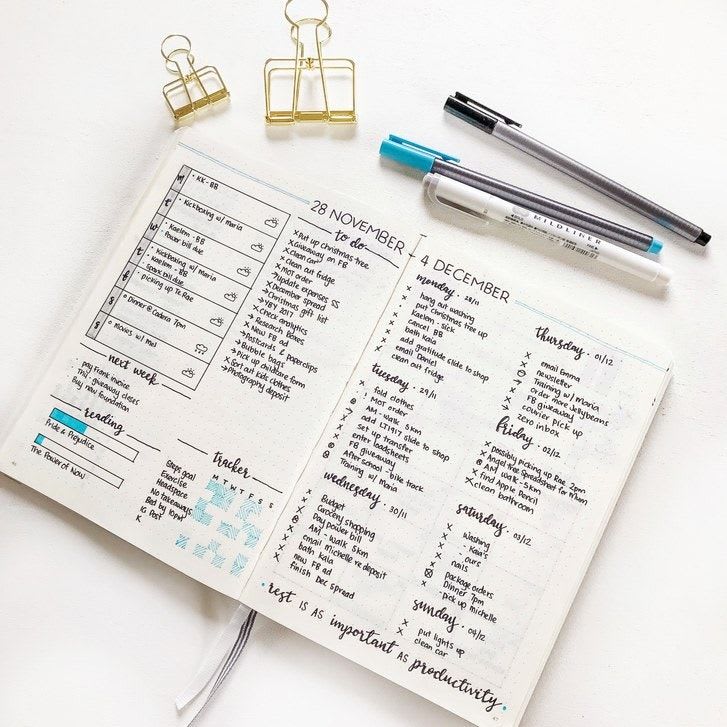
Use a Bullet Journal to Take Control of your Life
This morning, my mother reached out to me with this text message:

Immediately, I thought of bullet journaling! This is a method I've used for years to keep my life in order. Lately I've been doing my journaling in a text editor (but I'm still following all the practices outlined in this post). However, I shared a bunch of pictures of my old paper-based bullet journal from a couple of years back, and I'd like to share that with you now: it's an outstanding way to capture everything you're working on succinctly, and stay focused on your tasks each day, week, month and quarter!
What makes Bullet Journaling so special?
You get to make it entirely your own, and that makes it more effective. It's done on tangible pen and paper, which means that it works a lot better than electronic systems for most people. There's something about the tactile planning method that makes it work REALLY well.
I like to combine my bullet journal method with David Allen's "Getting Things Done: The Art of Stress-Free Productivity", which follows a handful of practices...
Organizing your Bullet Journal Effectively
You want to organize everything you're looking to accomplish into chunked-down tasks that each do not require more than 1 day worth of work. Anything more than that needs to get chunked down.
Then, you need to prioritize things based on urgency and what's most important RIGHT NOW. Make a separate list of things that take less than 15 minutes to accomplish -- you will want to set aside time EVERY day to chip away at the quick tasks until that pile is empty, and in the future, you will do any "15 minutes or less" tasks as immediately as possible, so they don't even end up on a list at all.
Finally, you should have 3 primary lists of tasks that take more than 15 minutes but less than a day, organized into "Urgent", "Medium" and "Low" priority lists. (Sometimes I use 5 priority levels, but I find that most items should fit on 3 levels nicely.)
You're going to look at these lists EVERY day, at the outset of your day, to determine which items you want to work on first and which items need the most attention. You need to revise the list every day for it to be effective. I usually have one VERY short list that's my focus for that specific day, and then, a master list that gets revised every month or quarter.
As I mentioned before, I'm doing a lot of these things with software at this point, but I used to do it all on pen and paper (the way that most people do when they're bullet journaling). Let's take a look at some examples of what this looks like!
Planning Out Action Items by Priority Level
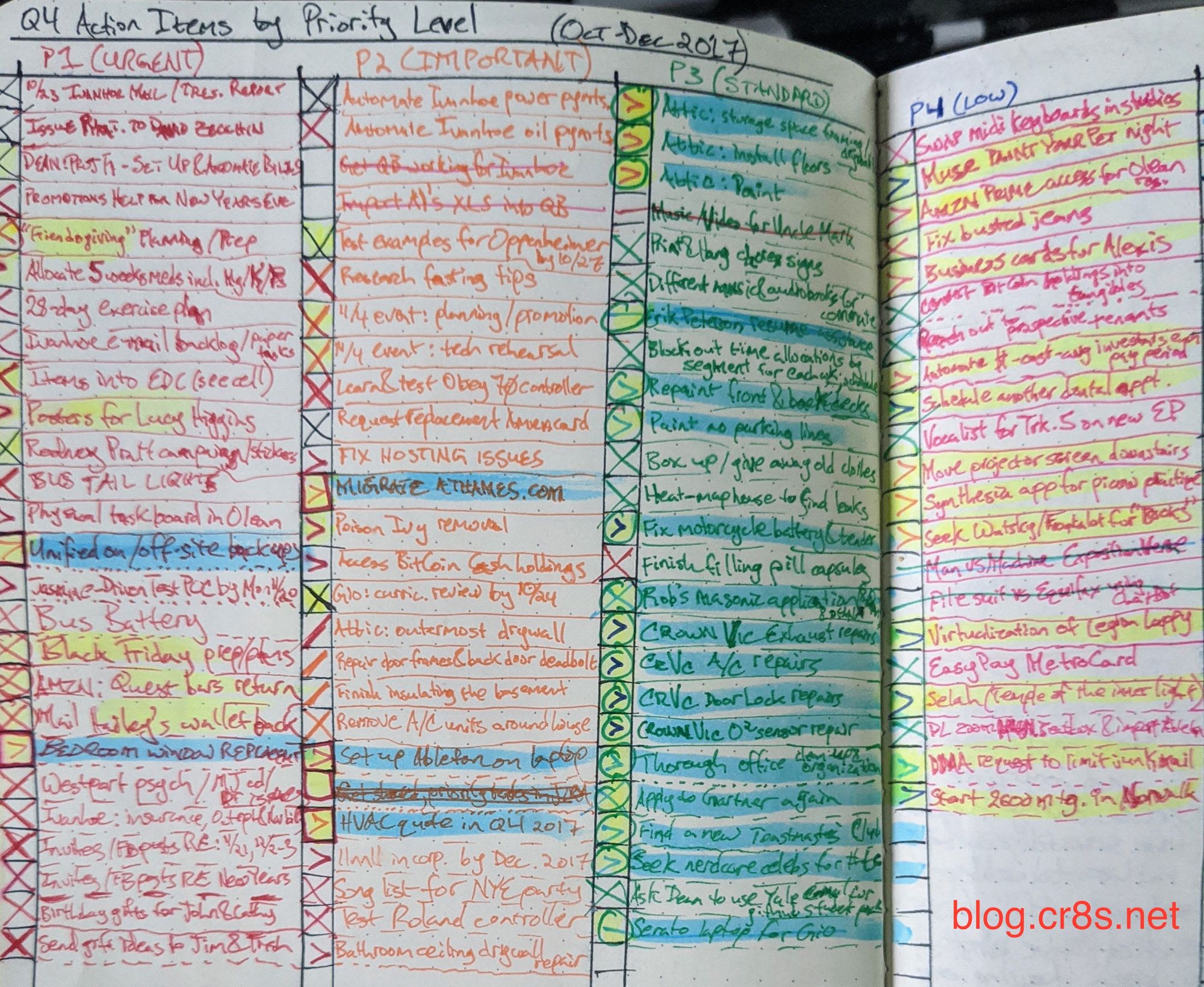
Here's an example from about 2 years back, from Q4 of 2017, when I did a lot of my bullet journaling on paper while on the train commuting in and out of NYC.
Items that got crossed out with a line through them are items I cancelled for whatever reason. When you start working on something, the box next to it gets a single diagonal line, indicating that it's in progress. When you finish that item, it gets another line (making an X), indicating that it's completed.
Once every quarter (or month, if you prefer), you'll start with a brand new set of lists... in those cases, anything that gets "pushed" to the next set of lists gets a "greater than" symbol (>) indicating that it didn't get finished in that time window.
Daily Logs: Track Tasks, Ideas, Meetings, etc.
Your daily lists will look similar to this, except everything should be in a single list for the day, and the priority order is the order they appear in the list (with highest priority items at the top). Anything you didn't finish by the end of the day gets a > to indicate that it moves to the next day.

The example I provided in the image above of my daily log really shows how versatile this journaling method is: you can include urgent priorities, journaling of what happened that day, journaling about your mood... any kind of notes that are relevant to your day. Bullet journaling is whatever you want it to be!
When you're defining your priority list for the next day, pick a couple of new items off your master lists (for the month or quarter, like my image above) and add a single slash to the master list (indicating that you're working on this now), and add it to your daily list, along with anything that didn't get finished yesterday.
Put the most time-sensitive and urgent items at the top of your daily list, along with anything that is REALLY easy to do or REALLY hard to do. The really easy stuff you'll finish first, to build up inertia and initiative. I try to get at least half a dozen small things done before 10am every day.
Next up is the cantankerous, obnoxious, BIG FROG tasks: anything you'd normally procrastinate on or avoid. I usually try to get at least one "Big Frog" done before noon, which also helps to build up steam for the day... but most especially, it means that if something comes up that derails the rest of my day, I can rest easy knowing that I crossed off one of the most difficult or unpleasant tasks that day, even if my entire day goes to hell after 12pm!
BuJos are versatile... so use them for everything!
Bullet Journals are potent because they are whatever you want them to be. You can use them for a LOT more than just tracking activities... they're a great place to capture your gratitude for the day, ideas for the future, or anything at all.
I recommend getting a journal that has dotted paper (that's why they call it a "bullet journal"!) and a little pocket in the back to keep your sundries (little post-its and coupons, business cards, or whatever fluff you collect). For this, you can't do much better than the Moleskine dotted pocket journal.
(Please use that link to buy yours... I get a tiny commission when you do!)
It's really important (in my opinion) to include a color-coded index or table of contents in your journal. This makes it possible for you to quickly get back to whatever item you like, without having to worry about rearranging your pages. Check out how that looks in one of my older bullet journals:
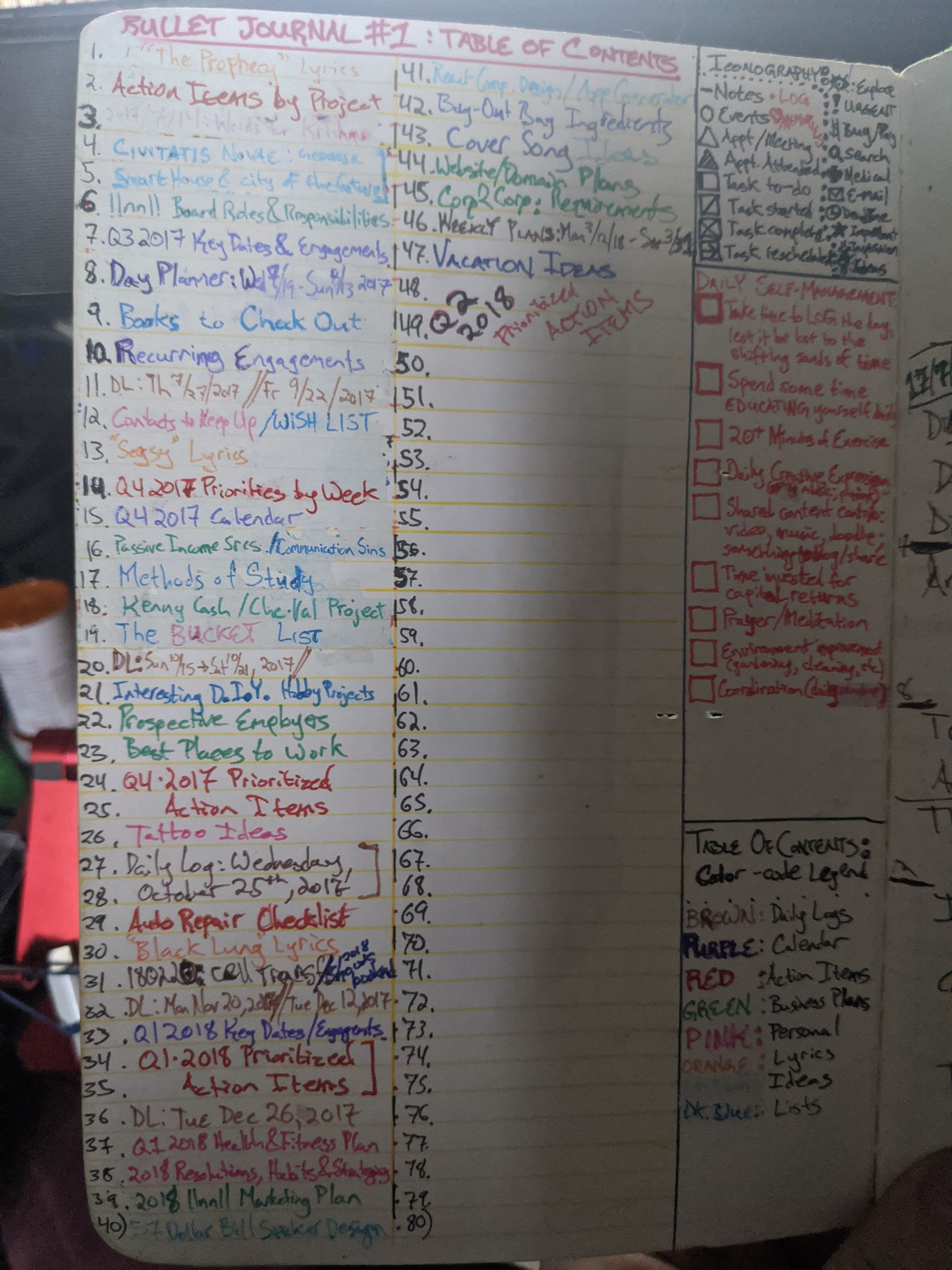
By color-coding your table of contents, you don't need to be concerned about what order you put things into your bullet journal. They can go in any order at all, and you will still be able to quickly find what you're looking for.
Quarterly Planning: Track Pressing, Time-Sensitive Items
You'll see that I use mine for action items, calendars that I used to draw up every couple of months, automotive repairs I need to get on, tattoo ideas, lyrics, etc. Anything is possible with your Bullet Journal!
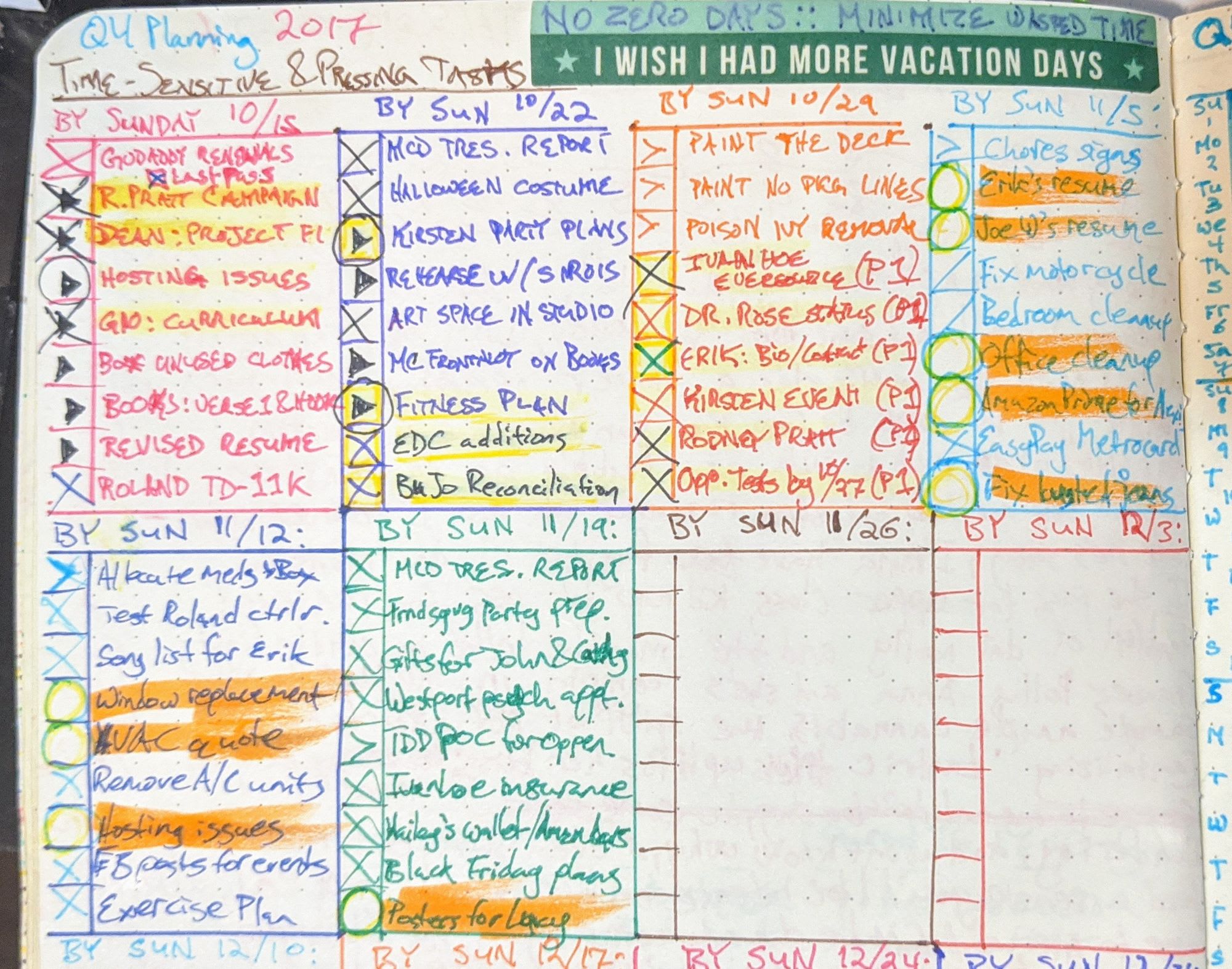
The view shown in the image above, for instance, lists all of the TOP priorities for each week that needed attention, so that I knew which items were most time-sensitive or urgent on a per-week basis, and also, so I could continue to make incremental progress on things like music tracks I was working on at that time.
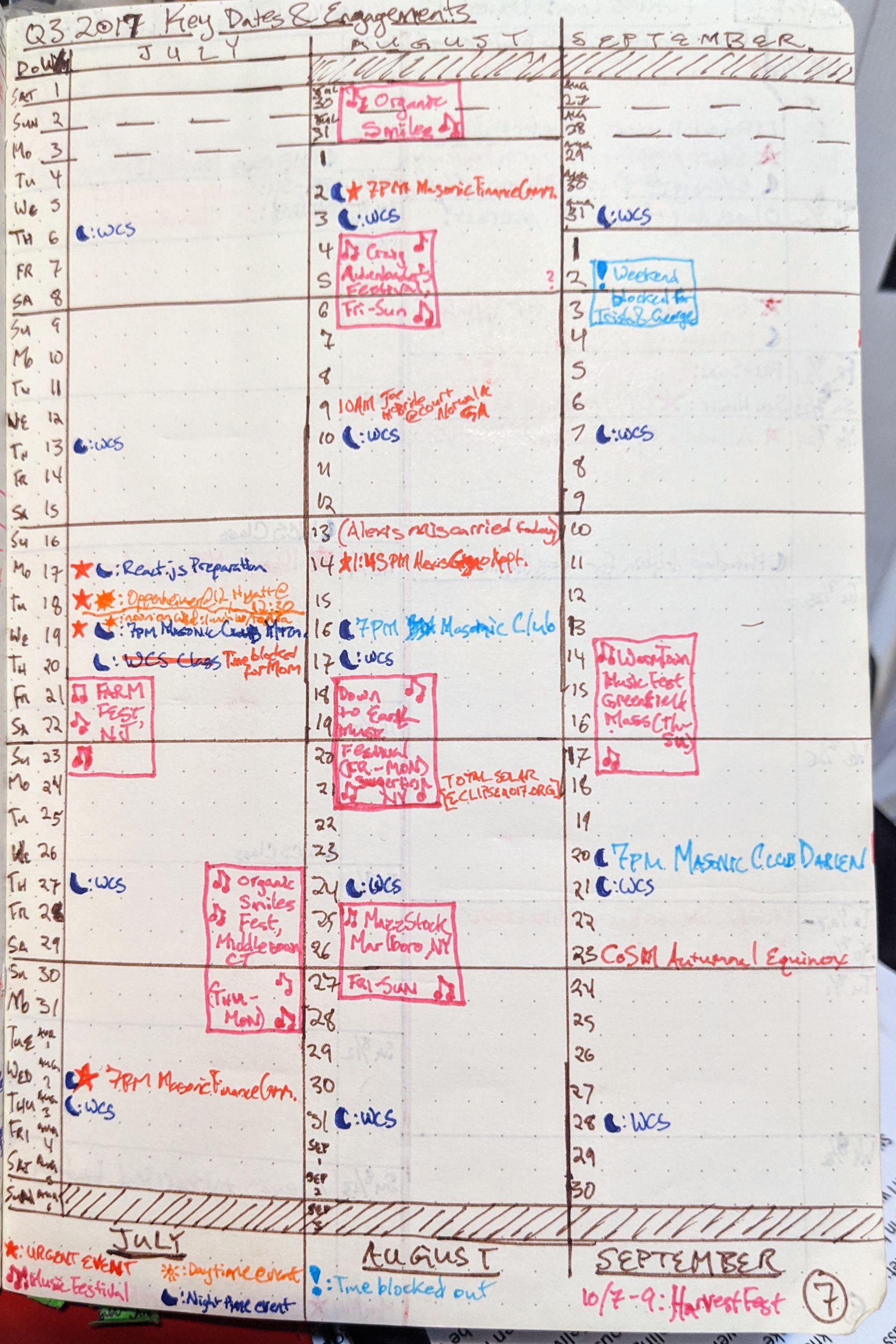
In this image just above, you'll see a calendar view that indicates what activities are taking place on a given day of the quarter, so I know what's a top priority for a given day. Can you use software for this? Absolutely... but there's something about the tactile sensation and time invested in doing it with a pen and paper that helps to solidify the schedule in your mind and keeps you from forgetting anything.
Last but not least... let's get glamorous!
Stickers are a fun way to spice up your bullet journal (or BuJo, as I call it)!
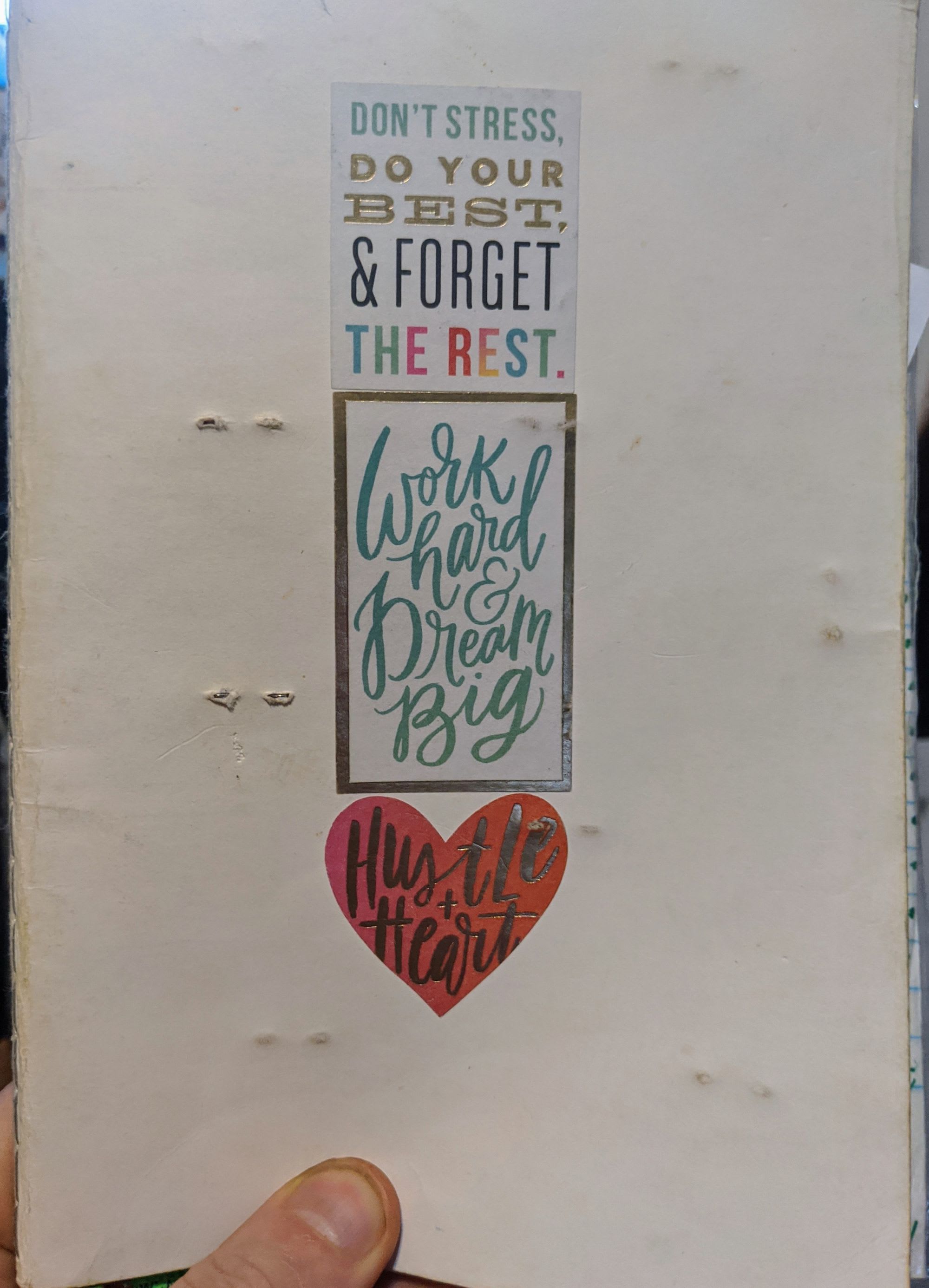
I got my bullet journal stickers on Amazon. (Use that link to buy yours!)
Are you excited to Bullet Journal yet?
I hope all of this is as useful to you as it has been for me. Give bullet journaling a shot for a couple of weeks, and let me know what you think on Twitter, Facebook and Instagram. Thanks for reading, have an outstanding day, week, month, year and life!
Ready to learn more about JavaScript development, organization and productivity tips?
Click here to read more articles on JavaScript, philosophy and life hacks!
